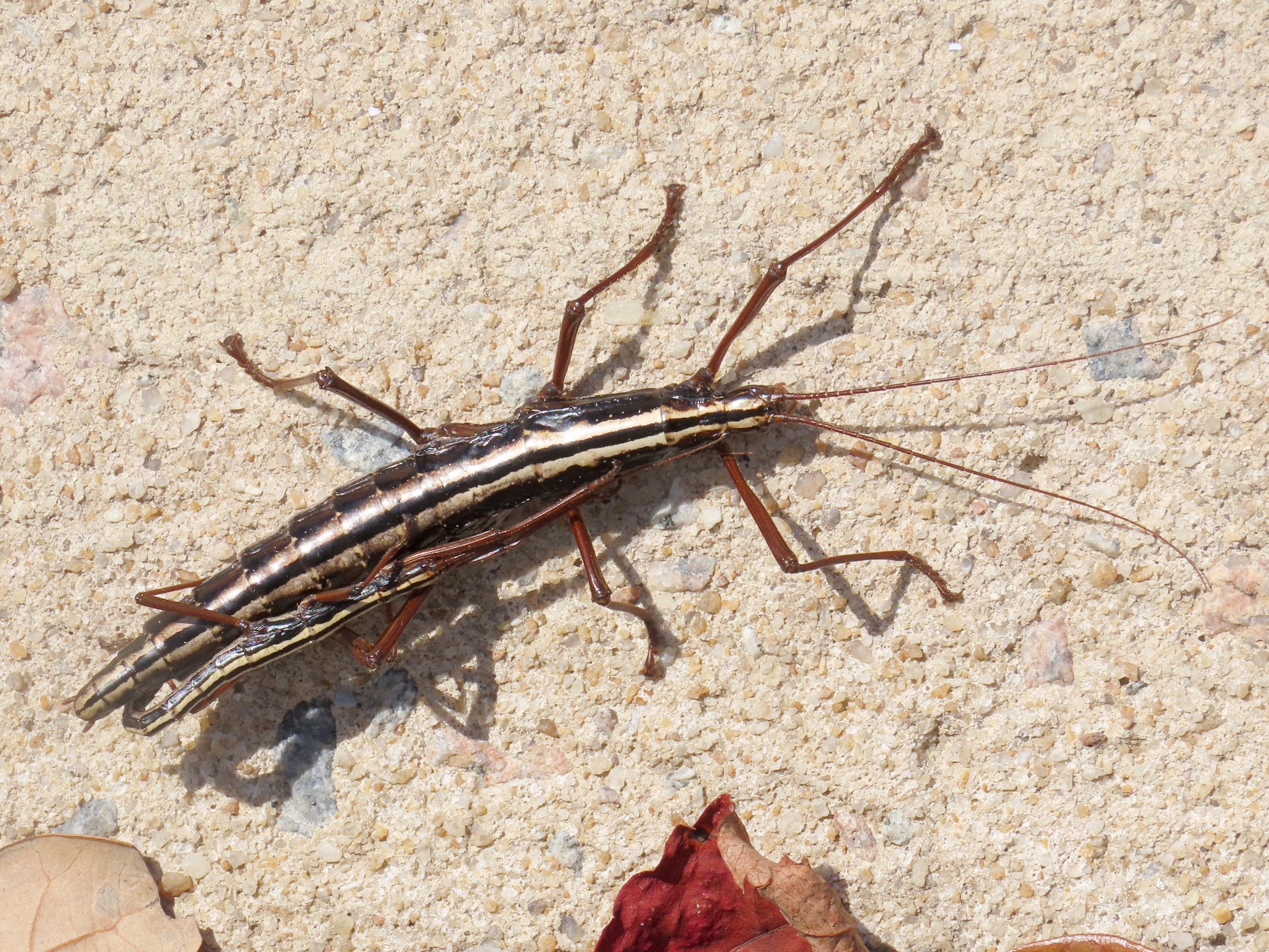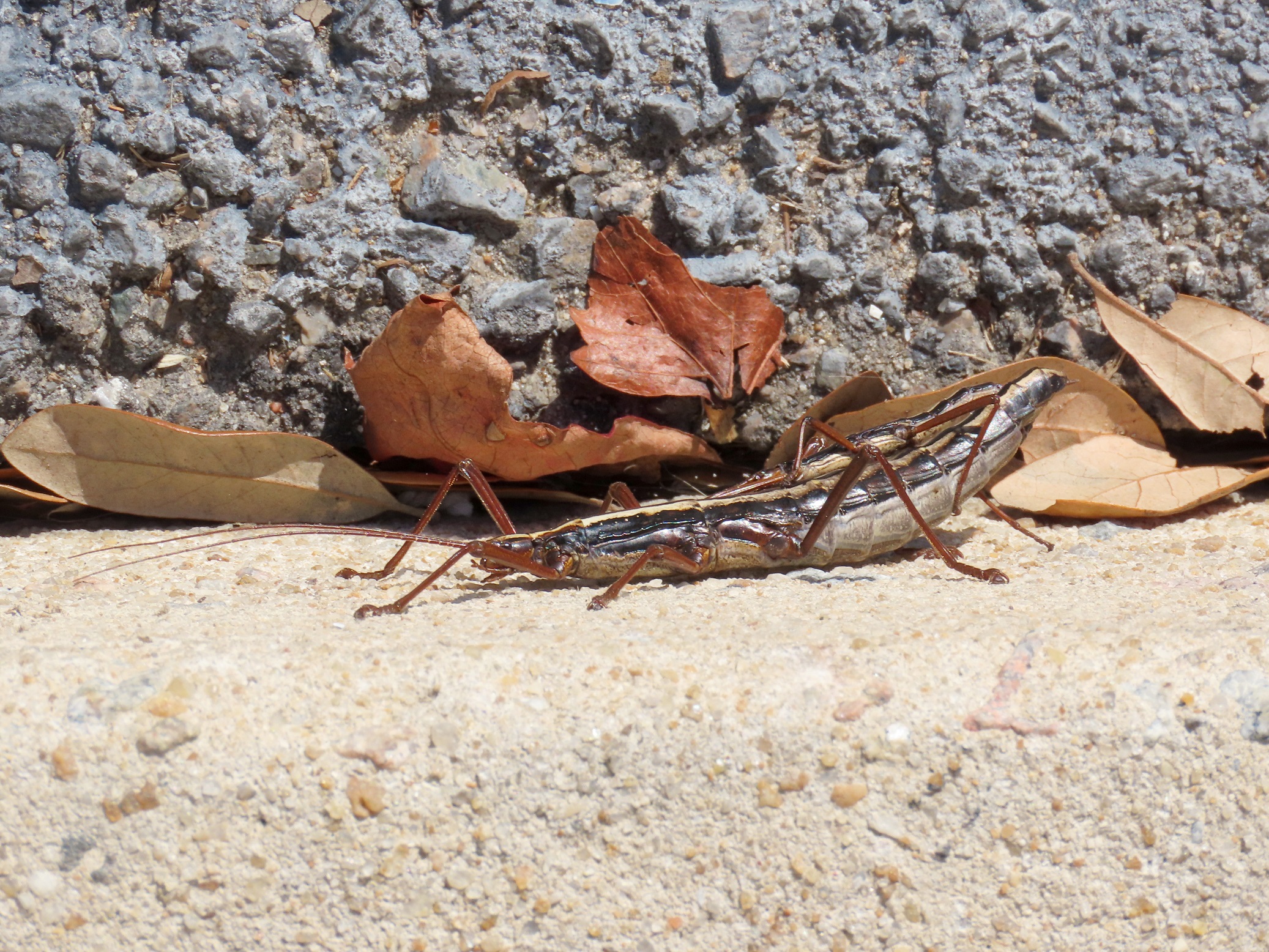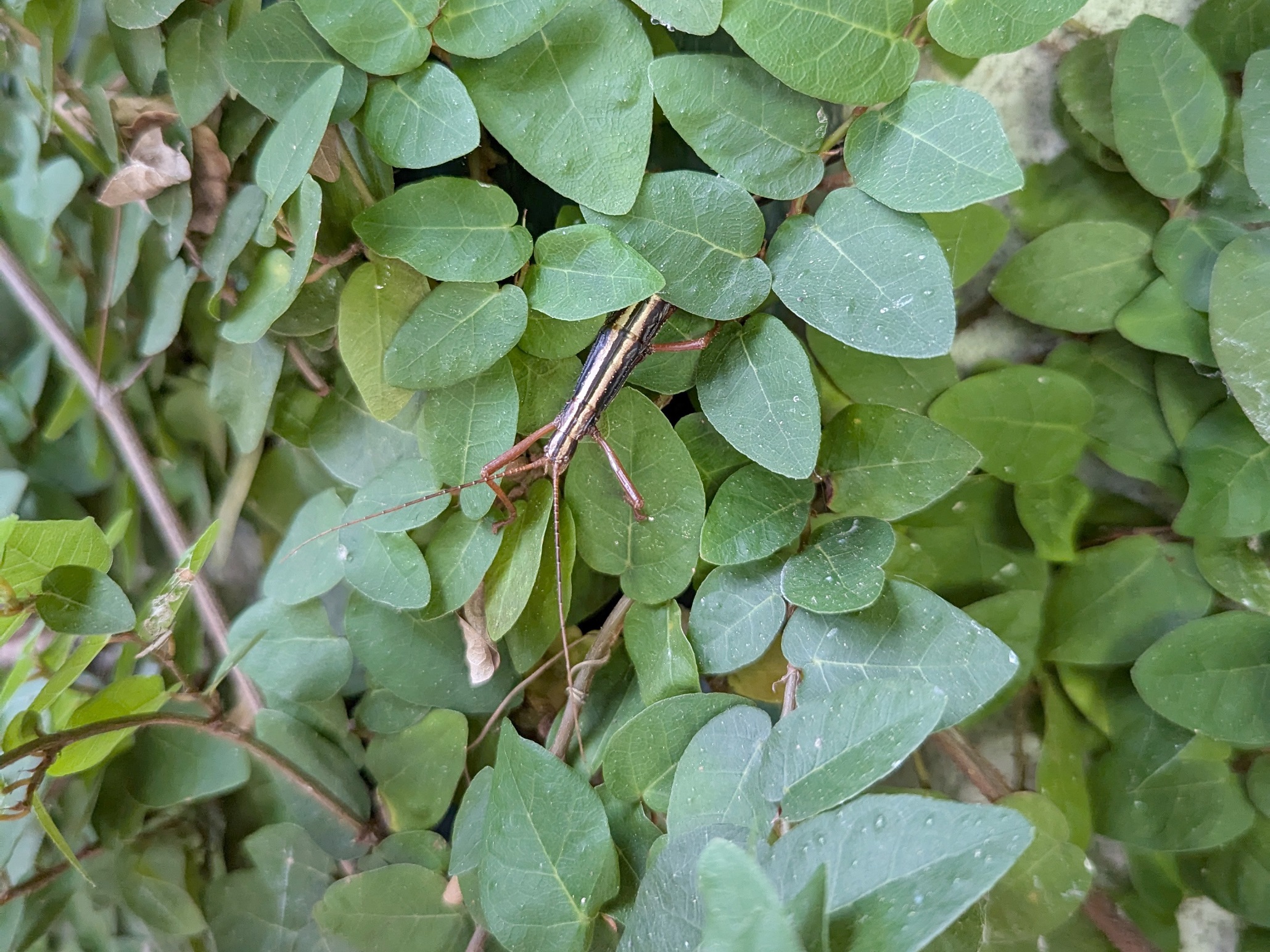


This week for Flora and Fauna Friday, it’s a bean pole of an oversized odd ball bug, the Southern Two-striped Walkingstick (Anisomorpha buprestoides).
Walkingsticks belong to the insect order of Phasmida, which contains only the Walkingsticks, of which we have about thirty species in the United States, only five in South Carolina, and likely just the one here on Edisto Island. The Southern Two-striped Walkingstick is found in the Deep South from Dallas, Texas to Wilmington, North Carolina. This insect doesn’t do well with harsh winters. So here in the Carolinas, it is found sporadically and most often on the Sea Islands and barriers island of our extreme coast, to include Edisto Island. They have a sister species, the Northern Two-striped Walkingstick (A. ferruginea), which is found in the Mississippi River valley east to the Appalachian foothills of South Carolina. The Southern Two-striped Walkingstick’s abundance peaks in late summer and early fall. They are mainly nocturnal and herbivorous, feeding on a wide variety of vegetation in the cover of darkness, preferring to eat the leaves of shrubs and small trees where they can camouflage on limbs and feed out of the reach of most predators.
The Southern Two-striped Walkingstick is an incredibly weird but easy to identify insect. They are a large, long, and finger shaped critter, with females growing in excess of three-inches and males half that. They have a dark, brown to black body with two wide pastel-yellow stripes down the back. We have nothing else on Edisto that looks like them! You also always find this insect in pairs, with the large, heavy female walking and the smaller, svelte male riding on her back. Walkingsticks are also wingless insects, which greatly limits their range and distribution on the landscape. Thus they can be common in some areas but scarce in similar habitats nearby. Which begs the question, how do males find a mate so quickly if they’re scarce on the landscape and can’t fly? In places like Florida where they have dense populations, it’s not an issue to smell out a date and hobble on over. But in the scattered, fragmented Sea Islands of the Carolinas, that’s not the case. It’s a mystery science hasn’t quite answered.
For a final fun fact and cautionary warning, Southern Two-striped Walkingsticks have a unique defensive mechanism. They shoot a liquid poison directly into your eyes. You read that right. They super-soaker toxic chemicals at would-be predators, and curious people. This chemical is sprayed from a pair of glands, just behind their head and at the base of their first pair of legs. It has a range of one to two feet and they’re sharpshooters to boot. This odiferous and noxious chemical functions similarly to pepper spray and serves to repel mammals, birds, reptiles, and arthropods. For humans, if it gets in our eyes or mouth it causes instantaneous, excruciating pain. This pain dissipates over a few hours and is followed by acute irritation and sometimes partial blindness for the next day or two. Although it’s quite rare for a Walkingstick to take a potshot at your pupils, as they prefer to just sit there and hide, maybe don’t pick this one up!